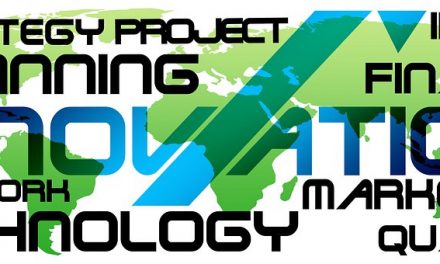Photo by Javier Sierra on Unsplash
After 250 years in the various stages of marketing, the 7 Ps of marketing are the crème de la crème in checklists to earn optimal profits.
Over the last 250 years or so since the Industrial Revolution, marketing has dramatically evolved in multiple stages for businesses and society.
The Industrial Revolution was characterized by significant changes – from agrarian and handicrafts in a barter economy – to industry and machine manufacturing.
Machines replaced hand tools. Steam supplied power. Then, other forms of power evolved that resulted into a factory system of mass production from the 1860s to the 1920s. This, of course, drove sales.
American business and citizens began to experience basic modern marketing from about the 1920s to the 1940s.
Marketing became more sophisticated from the 1940s to the 1960s as branding and positioning evolved to emphasize brand reputation and customer loyalty.
For sustained growth, marketers really began to focus on long-term customer relationships from the 1960s to the 1990s.
Digital – social marketing
The U.S. was exposed to the Internet in 1970s and it began to be used by the public in the early 1990s. Now, several billion people or more than half the planet’s population use the Internet.
In the 21st Century, social media came into vogue as people began to make personal connections digitally. LinkedIn was founded in 2003, Facebook in 2004 and Twitter in 2006.
Then, techniques were launched including crowd sourcing, influencers and continuous engagement with customers. Businesses began digitally introducing products via promotions and managing service issues with customers.
Marketers entered the data-mining era to capitalize on customer behaviors and preferences. SEO, short for search-engine optimization, became important for business web sites to garner top ranking on the Internet.
Marketing changes
Strategic marketing has become a continually evolving process. Initially, MBA students were taught how to implement a marketing mix. The marketing mix was comprised of the 4 Ps: Price, product, promotion and place.
Next, a marketing philosophy involved the 4 Cs: Customer, competition, cost, and capabilities. Then, marketers focused on the 5 Cs: Company, customers, competitors, collaborators and climate.
In 1981, academics Bernard H. Booms and Mary J. Bitner theorized the 4 Ps needed to be increased by three elements – Physical Evidence, People and Process – to become the 7 Ps of marketing.
The 7 Ps of marketing became the crème de la crème:
1. Product
A product can be anything you sell whether it’s your experience, service or physical product,
This means you must market with the best packaging, quality, features and the solutions they will deliver for your customers or clients.
2. Place
Depending on your target audience, place encompasses your distribution channel and refers to where you sell such as a brick and mortar store, ecommerce or web site, catalogue, social media or trade shows.
Businesses are more successful if they test what channels and places they use in marketing. For example, a lot of products are sold on Amazon, but many companies need to avoid the Amazon-effect.
3. Price
It’s important to use the right pricing-structure to attract the right customers and make a profit. Typical pricing strategies:
- Price-skimming – companies set a high price and lower the price gradually.
- Competition-based – sellers evaluate competitors’ prices and then set prices slightly above or below them.
- Lowest pricing – attracts buyers not concerned about quality, and by setting the lowest-possible prices.
- Premium pricing – selling products as luxury items.
- Value-based pricing – selling what the company believes the customers will pay based on their impression what the brand and product are worth.
- Cost-plus pricing – to the cost of the products, companies mark up the prices.
However, for most enterprises, recommended are eight Biz Coach strategies to give you pricing power for profits.
4. Promotion
There are many options in promotional strategies and mediums to improve brand awareness and increase sales with the goal of achieving profits. That usually means anticipating customers’ concerns and answereing with WIIFM statements – “What’s in it for me?”
The starting approach: Companies are more likely to succeed if they have a flawless “brand personality appeal.”
5. Physical Evidence
Physical evidence is all about developing trust in your customers’ experiences with you and creating a happy buying environment – from when they first learn about you – to their decisions to buy and follow-up afterward.
So consider all details starting with designing your logo to sending thank-you notes after the purchase and beyond.
6. People
People – includes anyone with the company — such as product designers, customer-service employees, marketers, managers, human resource employees and delivery drivers.
Employees are a major factor why people will buy from you. On average, Biz Coach research shows 52 percent of your customers’ buying decisions depend on what they think of you and your employees.
That even goes for your web site and customer service with chatbots.
Bottom-line: Everyone must be fully-trained, knowledgeable, polite and professional.
7. Process
Business processes refer to how the business operates, whether there is stellar customer service, product packaging and placement, a complete sales funnel in serving customers, solving complaints and providing customer support.
It’s important to enhance your processes to provide the ultimate customer experience.
The buyers’ journey will be efficient and seamless, if you use execution values to plan well.
Conclusion
The 7 Ps of marketing serve as a checklist so that a business operates with optimal efficiency to attract and keep valued customers for maximum profits.
From the Coach’s Corner, here are relevant strategies:
Strategies – Beat Competitors by Telling Your Brand’s Story — Buying decisions are based on emotion. So, to engage your target audience, it’s in your best interest to start by effectively telling your brand’s story.
Customer Acquisition Costs: What Are They and Why Do They Matter? — CAC is important because you don’t want to be spending more to acquire a customer than you are spending on your product or service.
For Profits, Align Sales and Marketing … Here’s How … — Alignment of sales and marketing is crucial for your success. Incohesive sales and marketing strategies result in wasted resources and a poor return on your investment.
Marketing Checklist – Tips for Growth and Winning — Here are fundamentals in marketing, plus links to additional relevant information.
Key to Unlock Vital Sales Secret: Attract, Keep Customers — Despite all the emphasis on speed in customer service, it’s not the salient factor in sales — for attracting and keeping customers happy. The power of emotion is most important for higher sales.
“Marketing is the creative use of truth”
-Philip Kotler
__________






